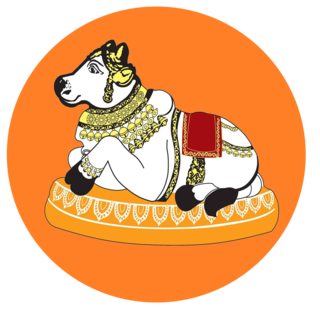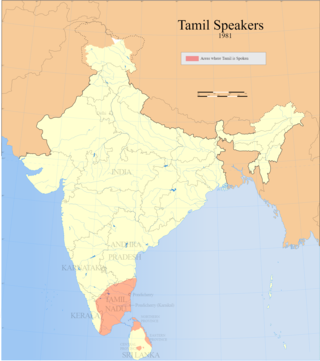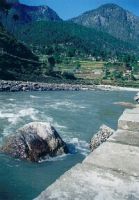
A yogi is a practitioner of yoga. In Vedic Sanskrit, yoga means "to add", "to join", "to unite", or "to attach" in its most common literal sense, whereas in recent days, especially in the West, yoga often means only the physical exercises of hatha yoga, the asanas. The term yogi is used broadly to refer to sannyasi or practitioners of meditation in a number of Indian religions. The feminine form is yogini, but is not always used, especially in the West.

Muktananda, born Krishna Rai, was the founder of Siddha Yoga. He was a disciple and the successor of Bhagavan Nityananda. He wrote a number of books on the subjects of Kundalini Shakti, Vedanta, and Kashmir Shaivism, including a spiritual autobiography entitled The Play of Consciousness. In honorific style, he is often referred to as Swami Muktananda.

Mahasiddha is a term for someone who embodies and cultivates the "siddhi of perfection". A siddha is an individual who, through the practice of sādhanā, attains the realization of siddhis, psychic and spiritual abilities and powers.
Mahasiddhas were practitioners of yoga and tantra, or tantrikas. Their historical influence throughout the Indian subcontinent and the Himalayas was vast and they reached mythic proportions as codified in their songs of realization and hagiographies, or namtars, many of which have been preserved in the Tibetan Buddhist canon. The Mahasiddhas are the founders of Vajrayana traditions and lineages such as Dzogchen and Mahamudra.

Mahāvatār Bābājī is the name given to an Indian tamil saint and yogi by Yogiraj Lahiri Mahasaya,
and several of his disciples, who reported meeting him between 1861, 1935 and 1980. Some of these meetings were described by Paramahansa Yogananda in his book Autobiography of a Yogi, including a first-hand report of Yogananda's own meeting with the yogi. Another first hand account was given by Sri Yukteswar Giri in his book The Holy Science. According to Sri M's autobiography, Babaji was Lord Shiva. In the second last chapter of his book, he mentions Babaji changing his form to that of Lord Shiva. All of these accounts, along with additional reported meetings, are described in various biographies. According to Yogananda's autobiography, Babaji has resided for at least hundreds of years in the remote Himalayan regions of India, seen in person by only a small number of disciples and others.

Nath, also called as Natha, are a Shaivism sub-tradition within Hinduism. A medieval era movement, it combined ideas from Buddhism, Shaivism and Yoga traditions in India. The Naths have been a confederation of devotees who consider Adinatha, or Shiva, as their first lord or guru, with varying lists of additional lords. Of these, the 9th or 10th century Matsyendranath and the ideas and organization mainly developed by Gorakshanath are particularly important.Thus Gorakhnath was originator of "Nath Panth.
Gurumayi Chidvilasananda, born as Malti Shetty, is the current spiritual head of the Siddha Yoga path. She is formally known as Swami Chidvilasananda or more informally as Gurumayi. The Siddha Yoga lineage (parampara) was established by Bhagawan Nityananda, whose disciple and successor, Muktananda was Gurumayi's guru.

Matsyendra, Matsyendranātha, Macchindranāth or Mīnanātha was a saint and yogi in a number of Buddhist and Hindu traditions. He is traditionally considered the founder of hatha yoga as well as the author of some of its earliest texts. He is also seen as the founder of the natha sampradaya, having received the teachings from Shiva. He is especially associated with kaula shaivism. He is also one of the eighty-four mahasiddhas and considered the guru of Gorakshanath, another important figure in early hatha yoga. He is revered by both Hindus and Buddhists and is sometimes regarded as an incarnation of Avalokiteśvara.

Yogi Gorakhnath was a Hindu yogi and saint who was the founder of the Nath tradition. He is considered as one of the two notable disciples of Matsyendranath. His followers are found in India at the place known as Garbhagiri which is in Ahmednagar in the state of Maharashtra. These followers are called yogis, Gorakhnathi, Darshani or Kanphata.

Siddhasana or Accomplished Pose, is a seated asana suitable for meditation. When performed by women it is also called Siddha Yoni Asana. The name Muktasana is sometimes given to the same pose, sometimes to an easier variant.

Siddha medicine is a system of traditional medicine originating in ancient Tamilakam in South India and Sri Lanka.

Shree Muktananda Ashram, in the Catskills area of upstate New York, is owned and operated by the SYDA Foundation. Its purpose is to provide a location where students of Siddha Yoga can study the philosophy and culture of the Siddha Yoga path and follow its daily practices. Shree Muktananda Ashram houses the headquarters of the SYDA Foundation, the organization that protects, preserves, and facilitates the dissemination of the Siddha Yoga teachings. The ashram is located in the hamlet of Fallsburg, approximately 130 kilometres north-west of New York City.
Gurudev Siddha Peeth is an Indian ashram run by the Gurudev Siddha Peeth Trust and serving the Siddha Yoga path. It is situated between the villages of Ganeshpuri and Vajreshwari, 70 miles (110 km) north-east of Mumbai. On the Siddha Yoga path it is known as the "mother ashram" because it is where Siddha Yoga really began.
The Siddha Yoga Ashram in Oakland is a Siddha Yoga retreat site in the Golden Gate neighborhood of Oakland, California, on the east side of San Francisco Bay. It was the second ashram established by the Indian meditation master Swami Muktananda, the first being Sri Gurudev Ashram, now Gurudev Siddha Peeth, in Ganeshpuri, India.
Central Council of Indian Medicine (CCIM) is a statutory body under Department of Ayurveda, Yoga and Naturopathy, Unani, Siddha and Homoeopathy (AYUSH), Ministry of Health and Family Welfare, Government of India, set up in 1971 under the Indian Medicine Central Council Act, which was passed in 1970. It is one of the Professional councils under University Grants Commission (UGC) to monitor higher education in Indian systems of medicine, including Ayurveda, Siddha and Unani.

Marshall Govindan is a Kriya Yogi, author, scholar and publisher of literary works related to classical Yoga and Tantra and teacher of Kriya Yoga. He is the President of Babaji's Kriya Yoga and Publications, Inc., and the President of Babaji's Kriya Yoga Order of Archaryas, a lay order of more than 25 Kriya Yoga teachers operating in more than 20 countries, and ashrams in St. Etienne de Bolton, Quebec, Bangalore, India, Colombo, and Sri Lanka.
Yogi Nath is a related group of monks which emerged around the 13th-century. They are sometimes called Jogi or simply Yogi, and are known for a variety of siddha yoga practices. Their tradition is known as Nath Sampradaya.
Medical Officer (AYUSH) is a title used in many states of India for senior government official designated for providing medical care and health services at district hospitals, community health centers and primary health centers. The post is held by a physician who has a recognized degree/diploma in Ayurveda, Unani, Siddha, Homeopathy etc.











